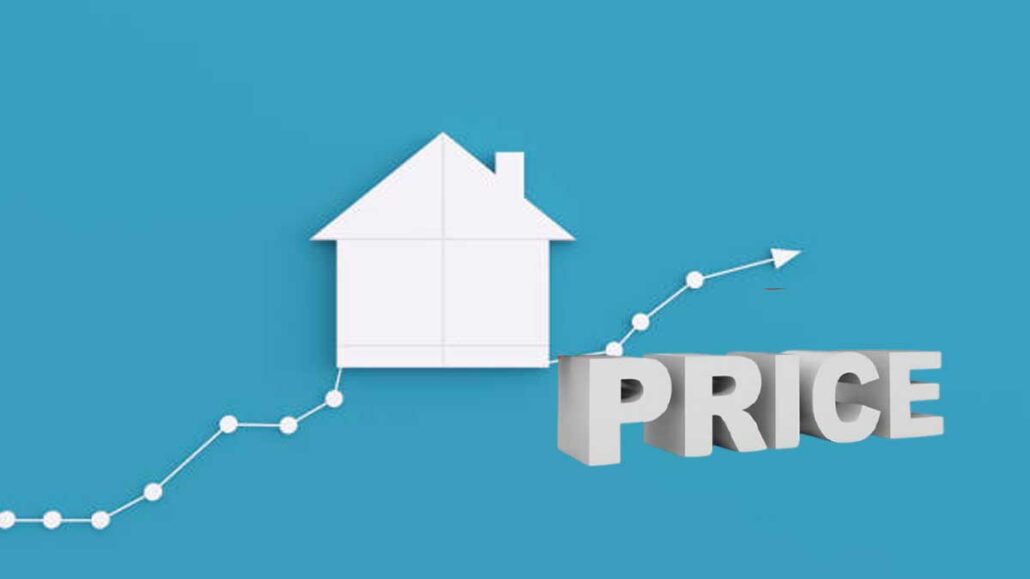Mortgage rates are on the rise in 2025, and it’s not just a fluke. If you’re wondering why mortgage rates going up is the big headline right now, you’re not alone. This trend impacts everything from buying your dream home to refinancing your current mortgage. Let’s break it down so you can understand what’s really driving these increases and what it means for you.

1. Federal Reserve Actions and Monetary Policy
The most significant influence on mortgage rates is the monetary policy set by the central bank of a country – in the United States, this is the Federal Reserve (often referred to as the Fed). The Fed uses various tools to manage inflation and maintain economic stability. One of its key tools is the federal funds rate, which is the target rate that banks charge each other for the overnight lending of reserves.
How it Impacts Mortgage Rates
While the federal funds rate doesn’t directly dictate mortgage rates, it has a ripple effect. When the Fed raises the federal funds rate to combat inflation, it increases the cost of borrowing for banks. These higher borrowing costs are often passed on to consumers in the form of higher interest rates for various loans, including mortgages.
Quantitative Tightening
In addition to raising the federal funds rate, the Fed can also engage in quantitative tightening (QT). This involves reducing the amount of U.S. Treasury bonds and agency mortgage-backed securities (MBS) it holds on its balance sheet. By selling these assets, the Fed increases the supply of bonds in the market, potentially pushing their yields higher. Since mortgage rates tend to track the yield of the 10-year Treasury bond, QT can contribute to higher mortgage rates.
2. Inflationary Pressures
Inflation, the rate at which the general level of prices for goods and services is rising, is a major concern for central banks. High inflation erodes the purchasing power of money and can destabilize the economy.
The Link to Mortgage Rates
When inflation is high, investors demand a higher return on their investments to compensate for the declining value of their money. This increased demand for higher yields affects the bond market, including Treasury bonds and MBS. As yields rise, so do mortgage rates to remain competitive and attractive to investors. Central banks often raise interest rates, including the federal funds rate, to combat inflation, further contributing to higher mortgage rates.
3. The Health of the Economy
The overall strength and stability of the economy play a role in determining mortgage rates.
Strong Economy
A robust economy with low unemployment and strong growth can lead to higher demand for housing. This increased demand can put upward pressure on home prices and, indirectly, on mortgage rates. Additionally, a strong economy might lead investors to anticipate higher inflation, prompting them to demand higher yields on bonds.
Economic Uncertainty
Conversely, periods of economic uncertainty or recession can lead to lower mortgage rates as investors seek safer investments like U.S. Treasury bonds, increasing demand and lowering yields. Central banks might also lower interest rates to stimulate borrowing and economic activity during downturns.
4. Investor Sentiment and the Bond Market:
Mortgage rates are closely tied to the bond market, particularly the market for U.S. Treasury bonds and mortgage-backed securities (MBS).
Treasury Yields
The 10-year Treasury yield is a benchmark that mortgage rates often follow. When the yield on the 10-year Treasury rises, mortgage rates typically follow suit. Factors influencing Treasury yields include expectations for future inflation, economic growth, and government borrowing.
Mortgage-Backed Securities (MBS)
MBS are bundles of mortgages sold to investors. The demand and supply of MBS directly impact mortgage rates. If there’s less demand for MBS, lenders may need to offer higher mortgage rates to attract investors. Factors like prepayment risk (homeowners paying off their mortgages early) and default risk can influence MBS yields and, consequently, mortgage rates.
5. Supply and Demand in the Housing Market
While not the primary driver of interest rates themselves, the dynamics of the housing market can indirectly influence mortgage rates.
High Demand, Low Supply
A market with high demand for homes and limited inventory can lead to higher home prices. While this doesn’t directly cause interest rates to rise, it can create an environment where lenders may feel less pressure to offer lower rates.
Increased Borrowing
A surge in home buying activity can increase the demand for mortgages, potentially putting upward pressure on rates if the supply of funds doesn’t keep pace.
Should You Buy Now or Wait?
That age-old question just got more complicated. While rising rates suggest waiting might be wise, home prices could continue to increase. In some cases, locking in a mortgage now—even at a higher rate—could be smarter than waiting for an uncertain future.
Consider your personal finances, job stability, and long-term goals when deciding.
Effects on Refinancing Opportunities
Rising rates are particularly tough on those looking to refinance. Many homeowners who locked in ultra-low rates during the pandemic are now discouraged from refinancing, as they wouldn’t benefit from a rate drop.
If you’re considering a refi, evaluate your break-even point and explore whether a cash-out refinance or adjustable-rate mortgage (ARM) might work in your favor.
What’s Next for Mortgage Rates in 2025?
Economists are divided. Some believe the Fed may slow down its rate hikes as inflation stabilizes, while others predict continued increases if economic pressures persist.
Monitoring monthly inflation reports, Fed meeting minutes, and housing demand trends can offer clues about what lies ahead.
What Higher Mortgage Rates Mean for You
Rising mortgage rates have several implications for homebuyers and the housing market:
- Increased Borrowing Costs: Higher rates translate to higher monthly mortgage payments, making homeownership less affordable for some.
- Reduced Purchasing Power: With higher rates, buyers may qualify for smaller loan amounts, limiting their housing options.
- Potential Slowdown in the Housing Market: Increased borrowing costs can cool down demand in the housing market, potentially leading to slower price growth or even price corrections in some areas.
- Impact on Refinancing: Higher rates make refinancing an existing mortgage less attractive for many homeowners.
Frequently Asked Questions (FAQ) – Why Are Mortgage Rates Going Up?
What is the primary reason mortgage rates are currently increasing?
The primary reason is the Federal Reserve’s actions to combat inflation. By raising the federal funds rate and engaging in quantitative tightening, the Fed increases borrowing costs throughout the economy, including for mortgages.
How does inflation affect mortgage rates?
High inflation erodes the purchasing power of money. Investors demand higher returns (yields) on bonds to compensate for this, which pushes up Treasury yields and subsequently, mortgage rates. Central banks also raise interest rates to curb inflation, further contributing to higher mortgage rates.
Is the Federal Reserve directly setting mortgage rates?
No, the Federal Reserve does not directly set mortgage rates. However, its monetary policy decisions, particularly the federal funds rate and quantitative tightening, significantly influence them. Mortgage rates are determined by lenders based on factors like the cost of funds (often tied to Treasury yields and MBS rates), market demand, and risk assessment.
How do U.S. Treasury bond yields relate to mortgage rates?
A: Mortgage rates, particularly for 30-year fixed-rate mortgages, tend to closely follow the yield on the 10-year U.S. Treasury bond. As the 10-year Treasury yield rises, mortgage rates typically increase as well.
What are Mortgage-Backed Securities (MBS), and how do they affect mortgage rates?
Mortgage-Backed Securities (MBS) are bundles of mortgages sold to investors. The yields on MBS directly impact the rates lenders offer for mortgages. Higher perceived risk or lower demand for MBS can lead to higher mortgage rates.
Does a strong economy always lead to higher mortgage rates?
Generally, a strong economy can lead to higher mortgage rates. Increased demand for housing and potential for higher inflation can push rates up. However, during periods of economic uncertainty, investors may flock to safer assets like Treasury bonds, potentially lowering their yields and, consequently, mortgage rates.
How do higher mortgage rates affect homebuyers?
Higher mortgage rates increase the cost of borrowing, leading to higher monthly mortgage payments. This can reduce a buyer’s purchasing power, meaning they may qualify for a smaller loan or need to look at less expensive homes.
Can mortgage rates go down again?
Yes, mortgage rates can go down. If inflation cools, the Federal Reserve may ease its monetary policy, potentially leading to lower Treasury yields and subsequently lower mortgage rates. Economic slowdowns or recessions can also cause rates to decline as investors seek safer investments.
Should I wait for mortgage rates to go down before buying a home?
This is a personal decision that depends on your individual circumstances, financial situation, and housing needs. Trying to time the market is difficult. Consider factors like your long-term housing plans, affordability, and the availability of suitable properties. If you find a home you love and can comfortably afford the monthly payments at the current rates, it might be the right time to buy.
Where can I find the current mortgage rates?
You can find current mortgage rates from various financial websites, mortgage lenders, and brokerage firms. Keep in mind that rates can vary depending on your credit score, down payment, loan type, and other factors, so it’s best to get personalized quotes.
Conclusion
The reasons why mortgage rates going up are complex, multifaceted, and ever-evolving. From Federal Reserve policy to global economic shifts, many forces are at play. Whether you’re planning to buy, sell, or refinance, staying informed is your best financial tool.

